#Code Design Service Providers
Explore tagged Tumblr posts
Text
IETM for Beginners A Quick Guide to IETM Code and Pixels

IETM: Interactive Electronic Technical Manual
Training Aids to Defence Client
If you are a supplier of defence then along with the system/equipment you also need to provide Training Aids
(CBT) — Computer-Based Training
Charts and Bloups
Video Film
Training Work Modules
Manuals Hard Copies
IETM
Evolution of Documentation in Defence
Before — Hardcopies and PDFs in DVDs (Upto 2015)
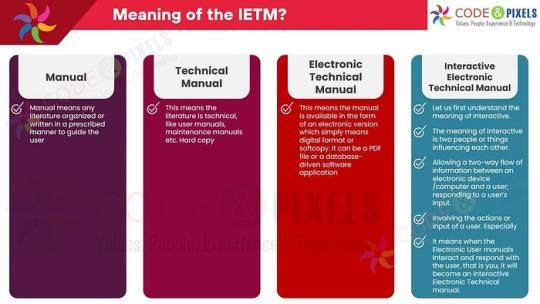
What is the meaning of the IETM?
Manual: Manual means any literature organized or written in a prescribed manner to guide the user.
TechnicalManual: This means the literature is technical, like user manuals, maintenance manuals etc. Hard copy
Electronic Technical Manual: This means the manual is available in the form of an electronic version which simply means digital format or softcopy. It can be a PDF file or a database-driven software application.
Interactive Electronic Technical Manual:
Let us first understand the meaning of Interactive. The meaning of interactive is two people or things influencing each other.
Allowing a two-way flow of information between an electronic device /computer and a user; responding to a user’s input.
Involving the actions or input of a user. Especially
It means when the Electronic User manuals Interact and respond with the user, that is you, it will become an Interactive Electronic Technical manual.
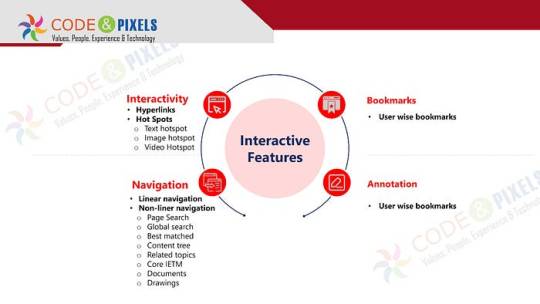
Interactive Features
Interactivity
Hyperlinks
Hot Spots
Text hotspot
Image hotspot
VideHotspot
Bookmarks
User wise bookmarks
Navigation
Linear navigation
Non-liner navigation
Page Search
Global search
Best matched
Content tree
Related topics
Core IETM
Documents
Drawings
Annotation
User wise bookmarks
The documents and pages are many hence, for easy and fast accessibility complete content is converted and stored as a database.
Whenever the user wants some information, IETM software produces the information in a fraction of a second.
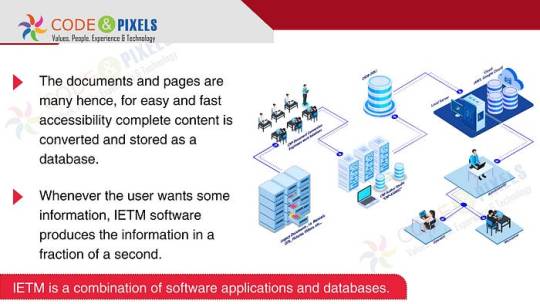
Use or Purpose of the IETM?
The purpose of the Manual is to give information related to the equipment to the end user for quick reference.
All the technicality is written in detail so that when an issue arises, the user can refer to the manual, as every time OEM or technical person or subject matter expert might not be available on the spot to resolve the issue.
If the manual has 10 pages users can refer easily.
But any system used by the defence will have multiple manuals and thousands of page counts and many times a user has to cross-refer between manuals, intra-manual and inter-manual to resolve the issue.
Referring to 10- 15 hard-copy or even soft-copy books simultaneously will be difficult and time-consuming.

How to access the IETM ?
IETM is a web-based application like our bank software or any other web application. The graphic user interface will be provided to use IETM through which users can interact and get the desired data.
Like all other standard software, Unauthorized users cannot access the IETM. IETM is a Login - login-based application. Only users having valid Login credentials can access the software.
Based on the user log credentials data will be provided to the user.
IETM has 2 types of Users and one Administrator
Maintainer
Operator
If the operator logs in, the user gets all the content related to operator use, similarly if the maintainer logs in only maintenance-related content is visible for that user.
Ideally, all the content is available for both users, because the purpose of the IETM is to refer to the manual to fix the issue.
Administrators can create users who can see the user’s navigation and log-in history and interact with the users using user dashboards through Annotations.
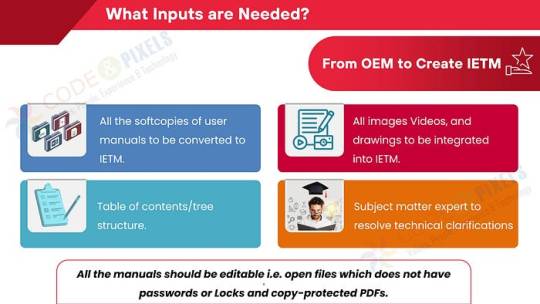
What Inputs are Needed? (From OEM to Create IETM)
All the softcopies of user manuals to be converted to IETM.
All images Videos, and drawings to be integrated into IETM.
Subject matter expert to resolve technical clarifications
Table of contents/tree structure.
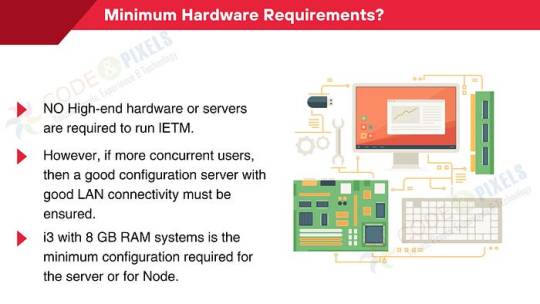
Minimum Hardware Requirements?
NO High-end hardware or servers are required to run IETM.
However, if more concurrent users, then a good configuration server with good LAN connectivity must be ensured.
i3 with 8 GB RAM systems is the minimum configuration required for the server or for Node.
Deliverables
BASED DB (Manuals are covered in the Database)
IETM VIEWER Software
User Manual and Installation Manual
Standards — compliance
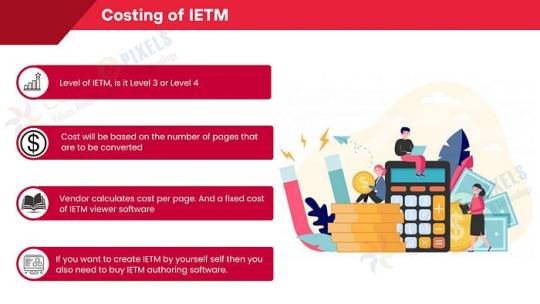
Costing of IETM: (Interactive Electronic Technical Manual)
Level of IETM, is it Level 3 or Level 4
Cost will be based on the number of pages that are to be converted
The vendor calculates the cost per page. And a fixed cost of IETM viewer software
If you want to create IETM by yourself self then you also need to buy IETM authoring software.
What are these Levels?
Level — 1 is any PDF file
Level — 2 is a PDF file with hyperlinks from the table of contents to the body etc.
Level — 3 is an HTML application. More hyperlinks, simple search, a content tree having log a screen with a hardcoded username and password and supplied in the format of EXE so that Windows can easily open
Level — 4 is Software plus Content/manuals converted as Database
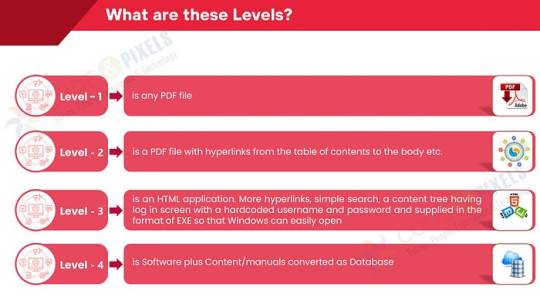
Regarding Level — 5, rest assured, till 2028 it will be Level — 4 only. As of now, there is nothing practically called Level — 5. Few are calling virtual reality and Augmented reality and Artificial intelligence Level — 5.
Pulling data from many user inputs and analyzing and giving results are done in Level — 5. IETM software cannot pull the data from various real-time points as No OEM will give the real-time information to third-party software directly. Yes, if the information is available offline, then that information can be imported into IETM and can be used as a reference.

#ietm#software#technology#ietm developement#ietm code and pixels ietm hyderabad#ietm software#elearning#code and pixels#ietm level iv#codeandpixels#ietm level 4 software requirements#technical documentation#ietm document#ietm documentation#interactive electronic technical manual#Ietm Service Providers#Ietm Software Designers of India#Software Development Company#Elearning Solutions Company#E Learning Content Development Company#Online Education#Digital Education#Digital Content#Software Development Solutions#Elearning#Ietm Developers#Econtent Development#Elearning Solutions Providers#Econtent Developers#Econtent
3 notes
·
View notes
Text
Optimizing Financial Management with Chiropractic Billing Services

In the healthcare sector, chiropractic care plays a vital role in managing musculoskeletal conditions, improving mobility, and enhancing patients' overall quality of life. However, managing the financial aspects of a chiropractic practice can be challenging due to the unique nature of treatments, frequent patient visits, and varying insurance policies. This is where medical billing services come into play, ensuring that chiropractic practices can focus on providing care while their financial operations run smoothly. These services streamline the billing process, minimize errors, and enhance reimbursement rates, which ultimately leads to better revenue management for chiropractic practices.
What Are Chiropractic Billing Services?
Chiropractic billing services are specialized financial solutions designed to meet the unique needs of chiropractic practices. These services are a critical component of Revenue Cycle Management (RCM) services, which oversee the entire process of patient billing, from claim submission to final payment. Chiropractic billing services handle everything from insurance verification and coding of chiropractic adjustments to following up on claims and managing denials. Since chiropractic care often involves ongoing treatments and multiple patient visits, these billing services ensure that claims are submitted accurately and promptly, reducing delays and maximizing revenue.
The Importance of Medical Billing and Coding in Chiropractic Care
Accurate medical billing and coding is essential for chiropractic practices to ensure that they are compensated for the services they provide. Chiropractic care involves various treatments, such as spinal adjustments, physical therapy, and other therapeutic services, each of which requires precise coding to avoid errors. Incorrect or incomplete coding can lead to claim denials or underpayments, which can negatively affect a practice’s cash flow. By partnering with experienced billing professionals who specialize in medical billing and coding, chiropractic practices can ensure that their claims are submitted correctly and in compliance with industry standards, leading to improved financial outcomes.
Benefits of Healthcare IT in Chiropractic Billing
In the digital age, Healthcare IT has transformed the way billing services are managed, offering numerous benefits for chiropractic practices. Advanced billing software and electronic health record (EHR) systems streamline the billing process by automating tasks such as claim submission, coding, and patient record management. Healthcare IT reduces human error, speeds up payment cycles, and allows for better communication between chiropractic providers and insurance companies. Additionally, real-time tracking and reporting features enable chiropractic practices to monitor the status of claims and payments, ensuring that revenue is managed efficiently. Healthcare IT enhances both the accuracy and efficiency of chiropractic billing, leading to improved practice operations.
Chiropractic Billing Services at Mediclaim Management
Mediclaim Management offers specialized Chiropractic Billing Services designed to meet the needs of chiropractic practices. With a deep understanding of the unique challenges that chiropractors face, their team of billing experts ensures that all aspects of the billing process are handled with precision and care. Mediclaim Management’s Chiropractic Billing Services help providers reduce billing errors, increase claim approval rates, and expedite reimbursements. By partnering with Mediclaim Management, chiropractic practices can focus on delivering high-quality care to their patients while ensuring that their financial operations run smoothly in the background.
With Mediclaim Management’s Chiropractic Billing Services, chiropractic providers can optimize their revenue cycle, reduce financial stress, and ensure that their practice remains financially healthy. This allows chiropractors to focus on what truly matters—improving the health and well-being of their patients.
#medical billing#Optimizing Financial Management with Chiropractic Billing Services#In the healthcare sector#chiropractic care plays a vital role in managing musculoskeletal conditions#improving mobility#and enhancing patients' overall quality of life. However#managing the financial aspects of a chiropractic practice can be challenging due to the unique nature of treatments#frequent patient visits#and varying insurance policies. This is where medical billing services come into play#ensuring that chiropractic practices can focus on providing care while their financial operations run smoothly. These services streamline t#minimize errors#and enhance reimbursement rates#which ultimately leads to better revenue management for chiropractic practices.#What Are Chiropractic Billing Services?#Chiropractic billing services are specialized financial solutions designed to meet the unique needs of chiropractic practices. These servic#which oversee the entire process of patient billing#from claim submission to final payment. Chiropractic billing services handle everything from insurance verification and coding of chiroprac#these billing services ensure that claims are submitted accurately and promptly#reducing delays and maximizing revenue.#The Importance of Medical Billing and Coding in Chiropractic Care#Accurate medical billing and coding is essential for chiropractic practices to ensure that they are compensated for the services they provi#such as spinal adjustments#physical therapy#and other therapeutic services#each of which requires precise coding to avoid errors. Incorrect or incomplete coding can lead to claim denials or underpayments#which can negatively affect a practice’s cash flow. By partnering with experienced billing professionals who specialize in medical billing#chiropractic practices can ensure that their claims are submitted correctly and in compliance with industry standards#leading to improved financial outcomes.#Benefits of Healthcare IT in Chiropractic Billing#In the digital age
0 notes
Text
Computer-based Training (CBT) Uses, Meaning and Advantages
If you're a student, healthcare provider, technology expert, or a brave soldier, CBT can serve as your hidden tool for learning and improving your skills. It's like having an incredible learning toolkit that makes even the most challenging subjects simple and enjoyable to understand!
#Electronic Technical Manuals#Hyderabad IETM developers#IETM#IETM Designers#IETM Designing#companies of Hyderabad#IETM Development#IETM Development In India#IETM Framework#IETM Level 4#IETM Manual IETM Development in Hyderabad#IETM service providers of Hyderabad#IETM Software#IETM software designers of Hyderabad#IETM software designers of INDIA#IETM Technical Manual#IETM vendors#Interactive Electronic Technical Manual#Interactive Electronic Technical Manual Software#What is IETM#Interactive Electronic Technical Publishing#code and pixels#ietm#ietm presentation#ietm s1000d ietp#ietm Level-iv#software#technology#s1000d#interactive electronic technical manual
1 note
·
View note
Text

Convenience
Keyless Entry: smart lock eliminates the need for physical keys. You can unlock door with a smartphone app, a key fob, or even through biometric methods like fingerprints.
Remote Access: many smart locks allow you to unlock your door remotely, which is useful if you need to grant access to someone while you’re away.
Enhanced Security
Access Logs: Smart locks can provide detailed logs of who entered and when, adding an extra layer of monitoring and control.
Temporary access codes: you can create temporary or one-time access codes for guest’s service providers or other, ensuring that only authorized individuals can enter.
Integration with smart home systems
Automation: smart locks can integrate with home automation systems, allowing for seamless control along with other smart devices
Voice control: many smart locks are compatible with voice assistant like amazon alexa, google assistant enabling hands-free operation.
Improved Accessibility
For Those with Mobility issues: smart locks can be easier to operate for people with disabilities or mobility issues, as they often offer touchless or simplified access method.
No more Lockouts: with keyless entry the chances of locking out are significantly reduced, which is especially helpful in busy or stressful situations.
Durability and reliability:
Weather Resistant: many smart locks are designed or withstands various weather condition, making them suitable for external doors,
Battery Backup: most smart locks are battery operated with a backup power source, ensuring they remain functional even during power outages.
Ease of Management
Centralized control: if you have multiple smart devices, managing them through a single app can streamlined operations and make home management more efficient.
Auto Lock Feature: Some smart locks come with auto-lock functions that ensure the door locks automatically after a set period, enhancing security.
Customizable Access Options
Personalization: Users can set different levels of access for family members, friends or service providers and easily modify or revoke permission as needed.
Is it worth the investment?
Initial Cost: smart locks typically have a higher upfront cost compared to traditional locks; however, this cost may be offset by the convenience and security features they provide.
Ongoing costs: some smart locks may require subscription fees for advanced features or cloud services, so it’s important to factor in these potential ongoing expenses.
Technology Dependence: Relying on technology means you’ll need to stay updated on software updates and ensure your devices are compatible with your smart lock.
Overall if you value convenience enhanced security and integration with smart home systems a smart lock can be a worthwhile investment. It’s important to assess your specific needs and budget to determine if the benefits align with your lifestyle and preferences.
To know more about the electronics locks: https://www.europalocks.com/electronic-locks
#smartlock #smartdoorlocks #electronicdoorlocks #smartlocksforhome #smarthomedoorlock #elock #bestdigitallock #digitallockformaindoor #digitaldoorlocksforhome #keylesssmartlock #smartfingerprintdoorlock #smarthouselock #electronicdoorlockwithremotecontrol #smartlockformaindoor #digitalhomelocks #digitalsmartdoorlock #electronicdoorlockwithremote #digitaldoorlockprice #smartmaindoorlock #bestdigitallockformaindoor #maindoorsmartlock #electronicdoorlockprice #smartdoorlockprice #electroniclocksformaindoor #smartdigitaldoorlocks #smartlockondoor #wifismartlock
#1)#Convenience#•#Keyless Entry: smart lock eliminates the need for physical keys. You can unlock door with a smartphone app#a key fob#or even through biometric methods like fingerprints.#Remote Access: many smart locks allow you to unlock your door remotely#which is useful if you need to grant access to someone while you’re away.#2)#Enhanced Security#Access Logs: Smart locks can provide detailed logs of who entered and when#adding an extra layer of monitoring and control.#Temporary access codes: you can create temporary or one-time access codes for guest’s service providers or other#ensuring that only authorized individuals can enter.#3)#Integration with smart home systems#Automation: smart locks can integrate with home automation systems#allowing for seamless control along with other smart devices#Voice control: many smart locks are compatible with voice assistant like amazon alexa#google assistant enabling hands-free operation.#4)#Improved Accessibility#For Those with Mobility issues: smart locks can be easier to operate for people with disabilities or mobility issues#as they often offer touchless or simplified access method.#No more Lockouts: with keyless entry the chances of locking out are significantly reduced#which is especially helpful in busy or stressful situations.#5)#Durability and reliability:#Weather Resistant: many smart locks are designed or withstands various weather condition#making them suitable for external doors
0 notes
Note
Writing a main character who’s a bartender… except I’m a minor with zero experience on alcohol or bars/bartending etc
Do you have any resources that could help me out?
Thanks so much, I love your blog !!!
Writing Notes: Bartender

Bartender - specializes in the art of mixing and serving alcoholic and non-alcoholic beverages in bars, restaurants, hotels, or other establishments.
In addition to mixing drinks, bartenders also play an important role in providing excellent customer service.
They engage with customers,
take drink orders,
suggest beverage options, and
create a welcoming and enjoyable atmosphere.
Bartenders must have good communication and interpersonal skills to interact with customers of diverse backgrounds and handle various situations that may arise during their shift.
They may also be responsible for managing the bar area,
ensuring cleanliness,
organizing supplies, and
handling cash transactions.
Types of Bartenders
There are various types of bartenders, each specializing in different areas of the hospitality industry. Here are a few common types:
Mixologists: Highly skilled bartenders who focus on creating innovative and artfully crafted cocktails. They have an extensive knowledge of ingredients, flavor combinations, and mixology techniques to design unique and visually appealing drinks.
Flair Bartenders: Known for their entertaining and acrobatic style of bartending. They incorporate flair techniques such as juggling bottles, performing tricks with bar tools, and creating visually captivating presentations while preparing drinks.
Craft Beer Bartenders: Have a deep understanding of the craft beer industry. They are familiar with various beer styles, brewing processes, and flavor profiles. They assist customers in selecting beers, provide recommendations, and may curate a rotating selection of craft beers on tap.
Tiki Bartenders: Specialize in crafting tropical and exotic cocktails associated with tiki culture. They are skilled in using unique ingredients, tropical fruits, and elaborate garnishes to create visually striking and flavorful drinks.
Hotel/Resort Bartenders: Cater to guests' needs, providing a range of beverages and maintaining high standards of customer service. They may specialize in classic cocktails, signature drinks, or be responsible for managing bars in various areas of the hotel.
Common Personality Traits of Bartenders
Based on a survey of 19,176 bartenders:
They are enterprising and conventional (according to the Holland Codes)
Bartenders tend to be predominantly enterprising individuals, which means that they are usually quite natural leaders who thrive at influencing and persuading others.
They also tend to be conventional, meaning that they are usually detail-oriented and organized, and like working in a structured environment.
They have high levels of extraversion and openness (according to the Big Five)
Bartenders score highly on extraversion, meaning that they rely on external stimuli to be happy, such as people or exciting surroundings.
They also tend to be high on the measure of openness, which means they are usually curious, imaginative, and value variety.
The Workplace
The workplace of a bartender can vary depending on the establishment they work in. Bartenders can be found in a range of settings, including:
bars,
pubs,
nightclubs,
hotels,
restaurants,
resorts, and even
cruise ships.
A typical bar environment consists of a well-equipped bar counter with a variety of spirits, mixers, and bar tools.
The bar area is usually designed to be functional and efficient, with shelves or cabinets to store bottles, refrigeration units for chilling beverages, and sinks for washing glassware.
Bartenders have access to a wide array of ingredients, garnishes, and utensils needed to prepare drinks.
The atmosphere within a bar can vary significantly.
Some establishments may have a lively and bustling atmosphere, especially during peak hours or on weekends, with music playing and customers engaged in conversations.
In contrast, other bars may have a more relaxed and intimate setting, catering to a specific clientele or offering a more sophisticated ambiance.
Bartenders often work as part of a team, collaborating with barbacks, servers, and other staff members to ensure smooth operations. Communication and coordination are essential, as they need to relay orders, share responsibilities, and support each other as needed.
Some previous related posts:
Cocktails ⚜ Literary & Hollywood Cocktails ⚜ Liqueurs
Mixology Tools & Popular Cocktails ⚜ Wine Terminology
Whiskey ⚜ Describing Intoxicated Customers
Words related to Drinking
Sources: 1 2 ⚜ More: References ⚜ Writing Resources PDFs
Glad to hear, thank you! Sounds like a challenge, but could be quite fun. Choose which of these details you would like to incorporate in your story. For more on the actual drinks, tools, other terms used, and possible behaviour of customers when they become intoxicated, I included some links to older posts. And you can find further information in the sources. All the best with your writing!
#anonymous#bartender#character development#writing reference#writeblr#literature#dark academia#writers on tumblr#spilled ink#writing prompt#creative writing#light academia#writing inspiration#writing ideas#writing resources
145 notes
·
View notes
Text
First Date
word count: 1157 || avg. reading time: 5 mins.
pairing: post-time skip!Sakusa x chubby!Reader
genre: fluff
warnings: implications of xenophobia


When you finally said Yes to a date with Sakusa you had an inkling it would get fancy, but not “five star rooftop restaurant” kind of fancy. The sushi place was hidden, out of sight of tourist attractions and other major travel spots, giving it an air of “if you know, you know”. Sakusa was a regular.
His considerate gesture of sending you a link to the restaurant’s dress code a week before the date, only sent you into a panic spiral. You never owned a dress even close as fancy as was required and even if you had the money to afford one, Japan didn’t exactly cater to a foreigner’s chubby body type. Only after nearly losing your mind did you find a place at the other side of Tokyo that rented dresses that you could barely fit into and with half a month’s rent now clinging uncomfortably to your squishy tummy, you met Sakusa outside your apartment on a Friday night.
“You look gorgeous.”, he said with a small smile, opening the passenger door to his car. With your tongue tucked between your lips for concentration you accepted his hand to help you inside. The dress didn’t exactly allow for much movement.
You chatted about your day at work as he drove and he invited you to his next game before you even reached your destination. He handed his car keys to a valet and offered his arm to lead you inside.
In the elevator you made sure to smooth out any wrinkles in your dress, real or imagined, and gasped when the doors slid open.
The atmosphere was intimate and calm. Over the quiet hum of voices you could just make out the sounds of traditional Japanese music and smartly dressed waiters brought mouthwatering, jaw-droppingly beautiful designed plates of sushi to the tables. Floor to ceiling windows allowed the patrons an unobstructed view of the city lights.
“Sakusa-sama.”, the lady at the reception greeted him with a professional smile, “Welcome. Please follow me.”
You saw her hesitate for a moment when she finally noticed you, but led you to a table in the corner of the restaurant. You held your breath when you sat down, the ride was already a challenge for regular breathing and you had no idea how you were supposed to fit any food inside you with the restrictions of the dress. But you didn’t care when Sakusa smiled at you.
“Thank you for coming.”
“Thank you for inviting me.”, you beamed.
A waiter appeared at the table and said with deeply faked apologetic tones, “I’m very sorry, sir. But it seems we cannot serve you tonight.”
Sakusa raised an eyebrow, then glanced at you, then back to the waiter.
“This is not going to be an issue.”, he said coolly, then turned his attention back to you. But the waiter didn’t leave.
“Sir, we will have to ask you to come back another time.”
“Please explain it to me. We are right on time, we are appropriately dressed and I made reservations.”
“Sir-“
Sakusa glared at him. “Please tell the chef that if he has any issues tonight to come tell me himself.”
And with that the waiter poured some water into the empty glasses before you, bowed and left.
You looked after him thoughtfully and took a sip. It happened before that you were turned away from restaurants due to a “no foreigners” rule, but you didn’t think that such an issue could arise at a place like this.
Sakusa smiled again and steered the conversation back to lighter topics, making you feel at ease within seconds. You were about to inch your hand closer to his when another person came to the table. He was undoubtedly the chef, dressed as he was. The waiter stood a little behind him.
“Sakusa-sama.”, the man in the spotless black uniform began.
“You’re not serious.”, Sakusa couldn’t help but scoff.
“Please understand that we are not able to provide the full service to foreigners.”
“She speaks Japanese.”, Sakusa informed them, “And even if she didn’t, I would translate for her.”
The chef shifted a little, throwing some kind of glance in your direction that you couldn’t quite interpret.
“We won’t be able to accommodate any dietary restrictions, Sakusa-sama.”
“I don’t have any.”, you said with a strained smile.
The chef was quiet and looked at your date imploringly. He held his gaze, then Sakusa quietly pushed back his chair and stood up.
He offered his hand to you.
“Thank you. The water was delicious.”, you said sweetly to the waiter who avoided your eyes.
“I can’t wait to tell everyone about your hospitality at my family’s next gala.”, Sakusa added with a cold smile and gently pulled you along, past a few gawking people to the elevator.
When the doors closed and the sounds of the restaurant disappeared, Sakusa let out a long sigh.
“I’m sorry.”, he said, leaning his back against the paneling, crossing his arms.
“Don’t worry about it. I think that’s about as much exposure as I would ever need to a five star restaurant.”
He chuckled. “The next one will be better, I promise.”
You smiled and went to stand next to him, lightly brushing your shoulder against his to cheer him up. The elevator began its slow descent.
“Bet you can’t wait to get out of that dress.”, he noted, then his eyes widened a moment later, “Wait, I didn’t mean it like that.”
You laughed. “You’re not wrong actually. Breathing does not come as a standard with this one.”
He considered you for a moment.
“Turn around.” He said it gently. More as a question than a demand.
You blinked in confusion, then did as he requested.
“Don’t be alarmed.” He stepped closer, his breath brushing against your neck.
You felt his hands work on the zipper on your back.
“What are you-“, you began feebly, your voice not quite having the grasp on your vocal chords like you would have wished.
He slowly ran the zipper down, the buttons by your nape holding the dress together but you felt the immediate relief around your tummy.
He shrugged off his suit jacket and draped it over your shoulders.
“There. Better?”, he asked. You nodded, your heart still beating too fast to turn around without revealing the intense blush on your cheeks.
The elevator came to a stop and the automatic voice announced you arrived at the lobby.
“Your bra is pretty.”, he said quietly, almost whispering it into your ear as the doors opened.
You followed him silently through the lobby, holding onto the jacket’s lapels.
“You still hungry?”, he asked when the cool night air brushed your faces as you waited for the valet to get his car.
“Starving.”, you admitted.
He grinned. “I know just the place.”
People stared but Sakusa couldn’t care less.
He rolled up the sleeves of his black button down and offered to trade you a chicken nugget for some French fries.

art: @qyhssss on Twitter
#sakusa x chubby reader#haikyuu x chubby reader#chubby reader#haikyuu fluff#haikyuu x reader#hq fluff#haikyuu x curvy reader#msby sakusa#hq sakusa#sakusa kiyoomi#haikyuu sakusa#sakusa x reader#sakusa x you#sakusa fluff#sakusa x y/n#sakusa kyoomi x reader
316 notes
·
View notes
Text
Defense (of the internet) (from billionaires) in depth

Picks and Shovels is a new, standalone technothriller starring Marty Hench, my two-fisted, hard-fighting, tech-scam-busting forensic accountant. You can pre-order it on my latest Kickstarter, which features a brilliant audiobook read by Wil Wheaton.

The only way to truly billionaire-proof the internet is to a) abolish billionaires and b) abolish the system that allows people to become billionaires. Short of that, any levees we build will need constant tending, reinforcement, and re-evaluation.
That's normal. No security measure (including billionaire-proofing the internet) is a "set and forget" affair. Any time you want something and someone else wants the opposite, you are stuck in an endless game of attack and defense. The measures that block your adversary today will only work until your adversary changes tactics to circumvent your defenses.
For example, mining all the links on the internet to find non-spam sites worked brilliantly for Google, because until Pagerank, there were zero reasons for spammers to get links to point to their sites. Once Google became the dominant way of finding things on the internet, spammers invented the linkfarm. This principle can be summed up as "Show me a ten-foot wall and I'll show you an eleven-foot ladder."
Security designers address this with something called "defense in depth": that's a series of overlapping defenses that are meant to correct for one another's weaknesses. Your bank might use a password, a 2FA code, and – for extremely high-stakes transactions – a series of biographical questions posed by a human customer service over a telephone line.
I've written extensively about defending a new, good internet from billionaire enshittifiers. For example, in this post, I described how Bluesky could be made enshittification-resistant with the use of "Ulysses Pacts" – self-imposed, binding restrictions on enshittification:
https://pluralistic.net/2024/11/02/ulysses-pact/#tie-yourself-to-a-federated-mast
A classic example of a Ulysses Pact is "throwing away the Oreos when you go on a diet." Now, it doesn't take a lot of work to devise a countermeasure your future, Oreo-craving self can take to defeat this measure: just drive to the grocery store and buy more Oreos. This even works at 2AM, provided you live within driving distance of an all-night grocer.
That doesn't mean you shouldn't throw away those Oreos. Depending on how strong your Oreo craving is, even a little friction can help you resist the temptation to ruin your diet. We often do bad things because of momentary impulses that fade quickly, and simply airgapping the connection between thought and deed works surprisingly well in many instances.
This is why places with fewer guns have fewer suicides of all kinds: there are plenty of ways to kill yourself, but none are quite so quick and reliable as a gun. People in the grips of a suicidal impulse who don't have guns have more chances to let the impulse pass (this is also why gun control leads to fewer all-cause homicides). So just because a measure is imperfect, that doesn't make it worthless.
If you're trying to give up drinking, you throw away all your booze, but you also go to meetings, and you get a sponsor who can help you out with a 2AM phone call. You might even put a breathalyzer on your car's ignition system. None of these are impossible to defeat (you can get an Uber to the liquor store, after all), but they all create friction between the thing you want, and the thing your adversary (your addiction) is trying to get. They strengthen the hand of you as defender of the sober status quo, against the attacker who wants you to relapse.
Critically, all these defensive measures also buy you space and time that you can use to organize and deploy more defenses. Maybe the long Uber ride to the liquor store gives you enough time to think about your actions so you call your sponsor from the parking lot. Defense is useful even when it only slows your adversary, rather than stopping your adversary in their tracks.
Scaling up from personal defense to societal-scale security considerations, it's useful to think of this as a battle with four fronts: code (what is technically im/possible?), law (what is il/legal?), norms (what is socially un/acceptable?) and markets (what is un/profitable?). This framework was first raised a quarter-century ago, in Larry Lessig's Code and Other Laws of Cyberspace:
https://commons.wikimedia.org/wiki/File:Code_And_Other_Laws_of_Cyberspace_Version_2_0.pdf
Lessig laid out these four forces as four angles of attack that challengers to the status quo should plan their strategy around. If you want to liberalize copyright, you can try norms (the "Free Mickey" campaign), laws (the Eldred v. Ashcroft Supreme Court case), code (machine-readable Creative Commons licenses) and markets (open access/free software businesses). Each one of these helps the other – for example, if lots of people believe in copyright reform (norms), more of them will back a Humble Bundle for open access materials (markets), and more lawmakers will be interested in changing copyright statutes (law), and more hackers will see reason to do cool things with CC licenses, like search engines (code).
But the four forces aren't just for attackers seeking to disrupt the status quo – they're just as important for defenders looking to create and sustain a new status quo. Figuring out how to "lock a system open" is very different from figuring out how to "force a system open." But they're both campaigns waged with code, law, norms and markets.
We're living through a key moment in enshittification history. Millions of people have become dissatisfied with legacy social media companies run by despicable, fascism-friendly billionaires like Elon Musk and Mark Zuckerberg and are ready to leave, despite the costs (losing contact with friends who stay behind). While many of them are moving to group chats and private Discord servers,tens of millions have moved to new social media platforms that advertise (though they don't necessarily deliver) decentralization: Mastodon (and the fediverse) and Bluesky (and the atmosphere).
Decentralization is itself a defensive countermeasure (code). When a service has diffuse power, it's harder for any one person to take it over. Federation adds another defensive layer, because users who don't like the way one server is run can move to another server, with varying degrees of data- and identity-portability. That makes it harder for server owners to squeeze users to make money (markets), and gives them an out if server owners try it anyway.
Federation with decentralization is my favorite anti-enshittification defense. It's powerful as hell. It's the main reason I endorse Free Our Feeds, an effort to (among other things) build more Bluesky servers to decrease the centralization and give users dissatisfied with Bluesky management an alternative:
https://pluralistic.net/2025/01/20/capitalist-unrealism/#praxis
That said, decentralization and federation are not perfect, set-and-forget defenses. Take email – the oldest, most successful federated system of them all. Email is nominally decentralized, but most email traffic goes through a handful of extremely large servers run by a cartel of companies (Google, Apple, Microsoft, and a few ISPs). These companies collude (or, more charitably, coordinate) to block email from non-cartel companies, in the name of fighting spam. This makes running your own mail server so hard that it is nearly impossible (that is, if you care about people actually receiving the email you send them):
https://pluralistic.net/2021/10/10/dead-letters/
What's interesting about enshittified email is that it didn't start with corporate takeover: it started with volunteer-maintained blocklists of untrustworthy servers that most email operators subscribed to, defederating from any server that appeared on the list. These blocklists of bad servers were opaque (often, their maintainers would operate anonymously, citing the threat of retaliation from criminal scammers whose servers appeared on the list). They had little or no appeal process, and few or no objective criteria for inclusion (you could be blocklisted for how your email server was configured, even if no one was using it to send spam). All of this set up the conditions to favor large email servers, and also had the effect of immunizing these large servers from appearing on blocklists. I mean, once three quarters of the internet is on Gmail, no one is going to block email from Gmail, even if a ton of spam is sent using its servers.
The lesson of email doesn't mean email is bad, nor does it mean decentralization and federation are useless. It doesn't even mean that blocklists of bad servers are evil. It just means that federation and decentralization are imperfect and insufficient defenses against enshittification, and that blocklists are useful, but very dangerous. It means that we should strive to keep our systems federated and decentralized, and watch our blocklists very carefully, and not rely on any of this as the only defense against enshittification.
Likewise, both Mastodon and Bluesky are built on free/open code and standards. That means that anyone can fork them, fix them or mod them. What's more, the licenses involved are irrevocable, making them very effective Ulysses Pacts. No one – not a CEO, not a VC investor, not a court or a blackmailer – can order someone to make their GPL code proprietary. The license is perpetual and irrevocable, and that's that.
Free/open licenses are excellent Ulysses Pacts and great code-related defenses against enshittification, but they, too, are imperfect and insufficient. Google, Facebook, Amazon, Apple and Microsoft have all figured out how to enshittify services that are built on free/open code:
https://mako.cc/copyrighteous/libreplanet-2018-keynote
And then there are all the companies that use free/open code and defeat the freedom and openness by simply violating the license, on the grounds that a decentralized, federated development community can't figure out who has standing to sue, and also can't afford to pay for the lawyers to do so:
https://sfconservancy.org/news/2022/may/16/vizio-remand-win/
That's not to say that code-based antienshittification measures are pointless – only to say that they need other measures to backstop them, as defense in depth. Let's talk about law, then. Both Mastodon and Bluesky are governed by legal entities that are, nominally, organized by charters that oblige them to eschew enshittification and be responsive to their users (Bluesky is a B-corp, Mastodon's code is overseen by a US nonprofit).
These structures are very important. I've been a volunteer board member for several co-ops and nonprofits (I was even once a volunteer for a nonprofit co-op!) and I'm familiar with the role that good governance can play in defending a project from internal and external pressures to betray its mission. That means I'm also familiar with the limits of these governance measures.
Take nonprofits: nominally, nonprofits are legally bound to serve their charitable purpose, and technically, stakeholders have legal recourse if they stray from this. But you don't have to look far to find nonprofits that have violated their charter and gotten away with it. Take the Nature Conservancy, which has become a key player in the market for fake "carbon offsets" that are used to justify everything from fossil fuel extraction to SUV manufacture:
https://pluralistic.net/2020/12/12/fairy-use-tale/#greenwashing
Or think of ISOC, who get tens of millions of dollars in free money every year from their stewardship of the .ORG registry, but who decided to hand over control of the nonprofits' TLD of choice to a shadowy cabal of hedge-fund billionaires:
https://www.eff.org/deeplinks/2020/12/how-we-saved-org-2020-review
Co-ops, too, are powerful but wildly imperfect. REI is a member co-op that does lots of great things…and also busts unions:
https://prismreports.org/2024/07/17/rei-workers-unionizing-fighting-for-agreemment/
But REI is a paragon of social virtue compared to its Canadian equivalent, Mountain Equipment Coop, whose board was taken over by corrupt assholes who then sold the whole thing to a US private equity fund and change the name to "MEC":
https://pluralistic.net/2020/09/16/spike-lee-joint/#casse-le-mec
B-corps are far from perfect, too: while they are nominally required to serve a positive social purpose, in practice, they can violate that purpose with impunity, whether that through greenwashing:
https://www.bbc.com/worklife/article/20240202-has-b-corp-certification-turned-into-corporate-greenwashing
Or Kickstarter insiders taking a $100m bribe to help Andreesen-Horowitz do a crypto pump-and-dump:
https://fortune.com/crypto/2024/03/11/kickstarter-blockchain-a16z-crypto-secret-investment-chris-dixon/
None of this is to claim that B-corps, co-ops, and nonprofits are useless. Maybe we should just give up on organization altogether and have some kind of adhocracy? If you're thinking this will help, then you need to read Jo Freeman's "The Tyranny of Structurelessness" and learn how a "leaderless" group is actually led by its least scrupulous, most Machiavellian schemers:
https://www.jofreeman.com/joreen/tyranny.htm
At this point, you might be mentally designing a new corporate structure, one that's designed to correct for both the tyranny of structurelessness and the brittleness of co-ops, nonprofits and B-corps. Please don't do this. Rolling your own corporate structure is like rolling your own cryptography or your own free software license. It always ends in tears:
https://www.reuters.com/technology/artificial-intelligence/openai-remove-non-profit-control-give-sam-altman-equity-sources-say-2024-09-25/
I like co-ops, nonprofits and B-corps. They're powerful – but insufficient – weapons against enshittification. They need to be backstopped by other measures, like norms. Normative measures are very powerful! Of course, mass revolts of angry users don't always keep companies from enshittifying:
https://www.theguardian.com/technology/2023/dec/30/reddit-moderator-protest-communities-social-media
But sometimes they do. The C-suite of Unity was shown the door after enshittifying their flagship product:
https://www.theverge.com/2023/10/10/23911338/unity-ceo-steps-down-developers-react
As was the enshittifying CEO of Sonos:
https://www.theverge.com/2025/1/13/24342179/sonos-ceo-patrick-spence-resignation-reason-app
And of course, these defensive measures reinforce one another. The public outcry against the .ORG selloff (norms) led to California's Attorney General stepping in (law), and after that, we more-or-less romped to victory:
https://www.theregister.com/2020/04/17/icann_california_org_sale_delay/
Markets are the final antienshittificatory force. If a social network is designed to be surveillance-resistant, it will be (very) hard to implement behavioral surveillance advertising. If a network is designed to support a many clients, it will be easy to implement an ad-blocker. Both factors make advertising-based businesses very unattractive to individual server operators, spammers, and VCs who back companies that operate elements of a federated server.
Same goes for systems that allow users to control the recommendations and other algorithmic aspects of their feeds (including switching these off altogether). The fact that Tiktok's users overwhelmingly use an algorithmic feed that they have no way to control or even understand is an anti-Ulysses Pact, an irresistible temptation for Tiktok to enshittify itself:
https://pluralistic.net/2023/01/21/potemkin-ai/#hey-guys
By contrast, it's much harder to pull those shenanigans with services that technologically devolve control over recommendations (code), making it less profitable to even try to attempt this (markets). And of course, if users refuse to tolerate this kind of thing (norms) and can hop to other servers (code), then any system that pulls that nonsense will lose lots of users and go broke (markets).
This defense-in-depth approach to decentralized social media pushes us to analyze both Mastodon and Bluesky through a tactical lens – to identify the weak parts in the defenses of each and shore them up.
Take Free Our Feeds and its attempt to stand up more Bluesky servers. This addresses one of the serious technical deficiencies in Bluesky (the lack of federation), and if lots of Bluesky users try it out, it will normalize the idea that Bluesky is a constellation of independently managed servers (norms). It also creates Bluesky alternatives with radically different commercial imperatives (markets), because the main Bluesky server is backed by venture capitalists, who are notorious for their enshittifying impulses.
But security isn't static – a tactic that works today won't work tomorrow if your adversary can figure out a way around it. Bluesky is a B-corp with an excellent board with some names I have profound trust for, but B-corps can abandon their public benefit purpose, and boards can be fired (and also even people you trust can talk themselves into doing stupid and wicked things, see .ORG).
If millions of Bluesky users flock to a rival service, one run by a nonprofit (markets), Bluesky's investors might be tempted to sever the link between Bluesky and that new server (code). That's what Facebook and Apple did to XMPP, an interoperable, federated messaging system that used to connect Apple users, Facebook users, and users of many other servers. They did this for commercial reasons (markets), to trap and lock in their users (code), and they got away with it because not enough users were outraged by this (norms) that they could get away with it.
When Bluesky's VCs fire the CEO, kick people like Mike Masnick off its board, and then defederate from Free Our Feeds' server, how do we make that more like Sonos or Unity (where the corporation capitulated to its users), and not like Reddit (where the user revolt was crushed)?
With social media, it's a numbers game. Social media grows by network effects: the more users there are in a system, the more valuable it is. It's not merely imperative to create alternative Bluesky servers, it's imperative to make them populous enough that cutting them off from the first Bluesky server will inflict more pain on the company than it inflicts on those other users. That's not a guarantee that Bluesky's future, enshittification-bent management won't go ahead and do it anyway, but it does increase the chances that if they press on, their users will take the hit to defect to free/open servers.
Bluesky has other problems besides its centralization, of course. The reason Bluesky is so centralized is that it's really expensive to run an alternative Bluesky server that provides a home for users who have left the main server (a "relay" in Bluesky-ese). Partly this is down to tooling: because no one has done it, Free Our Feeds will have to invent a lot of stuff to get that server up and running, but people who come later will benefit from whatever Free Our Feeds develops along the way.
But mostly, this isn't a tooling problem – it's an architecture problem. The way that Bluesky is structured demands a lot more of relays than Mastodon demands of "instances" (a loose Fediverse analog to relays):
https://www.techdirt.com/2025/01/21/the-technological-poison-pill-how-atprotocol-encourages-competition-resists-evil-billionaires-lock-in-enshittification/#comment-4253477
This is a code problem, and it's a hard one, but it's not insurmountable. The history of networked tools is the history of developers figuring out how to break apart large, monolithic, expensive services in cheaper, smaller, easier to develop. In other words, our defense in depth of Bluesky militates for more than one project – not just a "Free Our Feeds" but also a software development project to make it easier for anyone to free those feeds.
Which raises some important questions, the biggest being "Why bother?" After all, there's already a perfectly good Fediverse that could sure use the money and effort that Free Our Feeds is proposing to put into Bluesky. My main answer here is that the point of disenshittification is an enshittification-free internet, not a better Mastodon:
https://pluralistic.net/2025/01/20/capitalist-unrealism/#praxis
We want to set Bluesky users free because the problem with Bluesky isn't its users, it's the fact that there's no fire-exits those users can avail themselves of if Bluesky's VCs set it on fire:
https://pluralistic.net/2024/12/14/fire-exits/#graceful-failure-modes
But there's another good reason to do this, one that involves people who have no interest in using Bluesky: even if you don't want to use a better Bluesky, you likely have very good reasons to reach Bluesky users. Maybe you want them to help you organize against enshittification! Or maybe you just want to operate a real-world venue where people can gather and have a great time and support performers, and right now you're stuck advertising on Facebook and Instagram, and you don't want to end up being forced to use an enshittified, fire-exit-free Bluesky in the future:
https://www.dnalounge.com/backstage/log/2025/01/13.html
Of course, there's plenty of reasons to want to make Mastodon better. Many of Mastodon's features are absurdly primitive – the lack of threading support and quote-boosting sucks, and the supposedly opt-in system-wide search doesn't work, even if you opt in. Masto could sure use some of the money that Free Our Feeds is asking for to spruce up Bluesky.
This is true, but also irrelevant. Mastodon is stuck at around a million active users, while Bluesky has twenty times that amount. Crowdfunding a couple dollars per user to pursue software development is a reasonable goal, but raising twenty times that much is a lot harder:
https://mastodon-analytics.com/
The money being raised for Free Our Feeds isn't money that had been earmarked for Mastodon development, nor will abandoning Free Our Feeds redirect those funds to Mastodon development.
Which isn't to say that we shouldn't chip in to fund Mastodon development. I donated to the Kickstarter for Pixelfed, a Fediverse Insta replacement that has Meta so scared that they'll suspend your account if you even mention it:
https://www.kickstarter.com/projects/pixelfed/pixelfed-foundation-2024-real-ethical-social-networks
Adding Insta-like features to Mastodon is great. Fixing search, quoting, and threading would be great, too. We probably need some kind of governance efforts to keep volunteer-run, good faith defederation blocklists from exhibiting the same dynamics that email went through during the spam wars. There's some Bluesky features I'd love to see on Mastodon, like composable moderation and user-controlled, user-tunable recommendations. We also probably need some kind of adversarial press that closely monitors the governance structure for the Mastodon codebase and reports on process in standardization (I cannot overstate how much fuckery can take place within standards bodies, under cover of a nigh-impermeable shield of boringness).
Breaking Bluesky open is a priority. Keeping Mastodon open is a priority. But neither of these are goals unto themselves. The point is to set people free, not set technology free. Willie Sutton robbed banks because "that's where the money is." Right now, I'm interested in anti-enshittification measures for Bluesky because "that's where the people are."

Check out my Kickstarter to pre-order copies of my next novel, Picks and Shovels!

If you'd like an essay-formatted version of this post to read or share, here's a link to it on pluralistic.net, my surveillance-free, ad-free, tracker-free blog:
https://pluralistic.net/2025/01/23/defense-in-depth/#self-marginalization

Image: Mike Baird (modified) https://flickr.com/photos/mikebaird/2354116406
CC BY 2.0 https://creativecommons.org/licenses/by/2.0/
#pluralistic#mec#mountain equipment coop#public benefit corporations#openai#xmpp#open web#dotorg#isoc#icann#code law norms markets#code#law#norms#markets#adversarial interoperability#ulysses pacts#meeting people where they are#rei#union busting#circular firing squads#atproto#bluesky#bsky#activitypub#mastodon
154 notes
·
View notes
Text
GETCOUPONCODE - MEGA+

Unlock Savings with Exclusive Discount Codes and Coupons!
Are you on the lookout for the best deals, discounts, and savings on your favorite brands and products? Look no further than GetCouponCode.com – your go-to destination for unlocking exclusive discount codes, coupon codes, and incredible savings across various categories. Discover the world of smart shopping with our extensive selection of discounts.
Exclusive Discount Codes: Your Gateway to Savings
GetCouponCode.com brings you exclusive discount codes that serve as your gateway to significant savings. Whether you're shopping for fashion, electronics, or travel, our curated collection of codes ensures you get the best possible deals on your purchases.
Coupon Codes Galore: Save on Every Purchase
Explore a plethora of coupon codes covering a wide range of products and services. From tech gadgets to clothing and from beauty products to travel, our diverse selection of coupons codes caters to your every need, helping you save on every purchase.
Rabattcodes for International Savings: Global Discounts at Your Fingertips
Fr international shoppers seeking Rabattcodes, GetCouponCode.com offers a global perspective on savings. Discover codes that apply to various countries and unlock discounts that transcend borders.
Best Coupons for Maximum Savings: Handpicked for You
Our team handpicks the best coupons from across the internet, ensuring that you have access to the most lucrative deals available. Maximize your savings with carefully curated coupons that guarantee value for your money.
Rabates and Voucher Codes: Instant Discounts for Savvy Shoppers
Rabattcodes and voucher codes on GetCouponCode.com provide savvy shoppers with instant discounts. Enjoy the thrill of securing fantastic deals with these special codes designed to enhance your shopping experience.
Why Choose GetCouponCode.com?
Diverse Selection: Explore a diverse range of discount codes and coupons covering various product categories.
Global Reach: International shoppers can find Rabattcodes and global discounts tailored to their location.
Handpicked Coupons: Our team selects and verifies the best coupons to ensure reliability and value.
User-Friendly Interface: Easily navigate through our website to find the best deals and discounts.
Regular Updates: Stay informed about the latest discounts with our regularly updated coupon offerings.
Discover the joy of smart shopping and unlock incredible savings with GetCouponCode.com. Visit GetCouponCode.com to explore the world of discount codes, coupon deals, and unbeatable off
442 notes
·
View notes
Text
ever wonder why spotify/discord/teams desktop apps kind of suck?
i don't do a lot of long form posts but. I realized that so many people aren't aware that a lot of the enshittification of using computers in the past decade or so has a lot to do with embedded webapps becoming so frequently used instead of creating native programs. and boy do i have some thoughts about this.
for those who are not blessed/cursed with computers knowledge Basically most (graphical) programs used to be native programs (ever since we started widely using a graphical interface instead of just a text-based terminal). these are apps that feel like when you open up the settings on your computer, and one of the factors that make windows and mac programs look different (bc they use a different design language!) this was the standard for a long long time - your emails were served to you in a special email application like thunderbird or outlook, your documents were processed in something like microsoft word (again. On your own computer!). same goes for calendars, calculators, spreadsheets, and a whole bunch more - crucially, your computer didn't depend on the internet to do basic things, but being connected to the web was very much an appreciated luxury!
that leads us to the eventual rise of webapps that we are all so painfully familiar with today - gmail dot com/outlook, google docs, google/microsoft calendar, and so on. as html/css/js technology grew beyond just displaying text images and such, it became clear that it could be a lot more convenient to just run programs on some server somewhere, and serve the front end on a web interface for anyone to use. this is really very convenient!!!! it Also means a huge concentration of power (notice how suddenly google is one company providing you the SERVICE) - you're renting instead of owning. which means google is your landlord - the services you use every day are first and foremost means of hitting the year over year profit quota. its a pretty sweet deal to have a free email account in exchange for ads! email accounts used to be paid (simply because the provider had to store your emails somewhere. which takes up storage space which is physical hard drives), but now the standard as of hotmail/yahoo/gmail is to just provide a free service and shove ads in as much as you need to.
webapps can do a lot of things, but they didn't immediately replace software like skype or code editors or music players - software that requires more heavy system interaction or snappy audio/visual responses. in 2013, the electron framework came out - a way of packaging up a bundle of html/css/js into a neat little crossplatform application that could be downloaded and run like any other native application. there were significant upsides to this - web developers could suddenly use their webapp skills to build desktop applications that ran on any computer as long as it could support chrome*! the first applications to be built on electron were the late code editor atom (rest in peace), but soon a whole lot of companies took note! some notable contemporary applications that use electron, or a similar webapp-embedded-in-a-little-chrome as a base are:
microsoft teams
notion
vscode
discord
spotify
anyone! who has paid even a little bit of attention to their computer - especially when using older/budget computers - know just how much having chrome open can slow down your computer (firefox as well to a lesser extent. because its just built better <3)
whenever you have one of these programs open on your computer, it's running in a one-tab chrome browser. there is a whole extra chrome open just to run your discord. if you have discord, spotify, and notion open all at once, along with chrome itself, that's four chromes. needless to say, this uses a LOT of resources to deliver applications that are often much less polished and less integrated with the rest of the operating system. it also means that if you have no internet connection, sometimes the apps straight up do not work, since much of them rely heavily on being connected to their servers, where the heavy lifting is done.
taking this idea to the very furthest is the concept of chromebooks - dinky little laptops that were created to only run a web browser and webapps - simply a vessel to access the google dot com mothership. they have gotten better at running offline android/linux applications, but often the $200 chromebooks that are bought in bulk have almost no processing power of their own - why would you even need it? you have everything you could possibly need in the warm embrace of google!
all in all the average person in the modern age, using computers in the mainstream way, owns very little of their means of computing.
i started this post as a rant about the electron/webapp framework because i think that it sucks and it displaces proper programs. and now ive swiveled into getting pissed off at software services which is in honestly the core issue. and i think things can be better!!!!!!!!!!! but to think about better computing culture one has to imagine living outside of capitalism.
i'm not the one to try to explain permacomputing specifically because there's already wonderful literature ^ but if anything here interested you, read this!!!!!!!!!! there is a beautiful world where computers live for decades and do less but do it well. and you just own it. come frolic with me Okay ? :]
*when i say chrome i technically mean chromium. but functionally it's same thing
462 notes
·
View notes
Text
Interactive Electronic Technical Manual: IETM Images
The word "IETM" stands for "Interactive Electronic Technical Manual," and it refers to an interactive manual and electronic/digital format. If a PDF file is electronic or digital, will that be referred to as an IETM? is an Interactive Electronic Technical Manual range from Level 3 , 4 and 5.

IETM for beginners A Quick Guide to IETM -Code and Pixels

IETM for beginners - Interactive Electronic Technical Manual

IETM for beginners - Training Aids to Defence Client

What is the Meaning of IETM Software -Code and Pixels

IETM for beginners - Interactivity Features
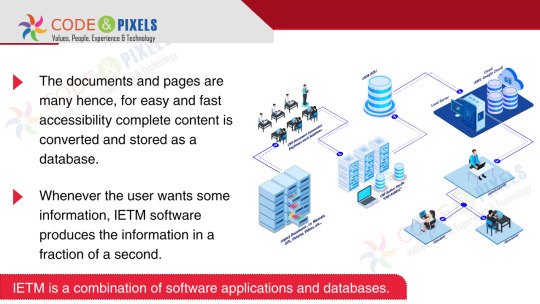
IETM for beginners - Use or Purpose of the IETM

IETM for beginners - How to access the IETM
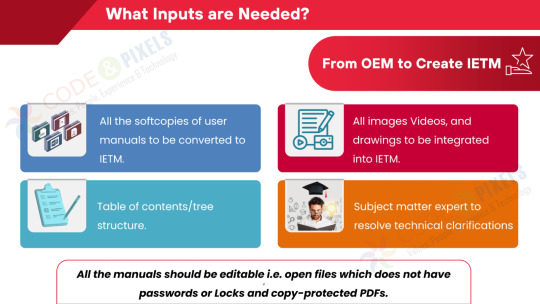
IETM for beginners - OEM to Create IETM

IETM for beginners - Minimum Hardware Requirements for IETM

IETM for beginners - What is IETM and What is Not IETM

IETM for beginners - Costing of IETM Interactive Electronic Technical Manual

What are IETM Interactive Electronic Technical Manual Levels
#ietm for beginners#interactive electronic technical manual#ietms#technical documentation#ietm service providers#ietm developer#ietm designer#ietm software developers#ietm software development#ietm software#ietm level 4#code and pixels ietm software solutions#what is ietm software
1 note
·
View note
Text

Commission Info!
This post is going to go over my commission information. Mostly for character illustrations, but there will be other kinds of commissions included. I'll be breaking up the information and prices into chunks based on: - Art Style - Pose - Additional Elements (i.e. backgrounds, props, additional characters...) - Experimental Commissions (i.e. comics, animations, etc...) - Terms of Service. There will be example images provided and a short paragraph explaining the information. Should be a long post so it will all be under the read-more.
Art Style
The style decides the base price of your commission. Sketch: $15

The sketch style means I only do a sketch of the character. I generally will keep it clean but they will often have a rough feeling to them still. I am generally okay with the inclusion of one, somewhat sparse color in a sketch commission used for occasional detailing. Colored Doodle: $20

With a colored doodle, you get a rough and sketchy drawing but with some simple coloring. The amount of detail and complexity depends on additional commission add-ons. However, I get a lot more say in how the end result looks with these, meaning the general "roughness," presence/amount of shading, etc are all at my own discretion. Flat Colors: $30

This style means I keep it to flat colors only. The line art will be cleaner than the sketch or colored doodle. However, there will be no shading whatsoever. Rendered: $50

A fully rendered commission includes full color and shading. I will often use textured brushes in these, but if you want something smoother then you can ask for that. I include Disco Elysium styled portraits here and not in "style imitation" (further down) generally because I feel better attempting that style as I've had attempts with it in the past.
Pose
From here on, prices are considered "add-ons" meaning they are added on to the base price from the selected commission style. Bust: +$0 A bust commission includes the head, shoulders, and sometimes chest of a character. Half Body: +$10 Half body commissions can include hips and above on a character. If you want a bust commission but also wanted to include a character's hands in the pose, it is considered a half body commission. Full Body: +$20 Generally includes anything beyond the hips. If you can see the whole body, it feels self explanatory that a full body commission is what you are looking for.
Additional Elements
Backgrounds Transparent/Single Color: +$0 If nothing is specified for the background, the commission will simply have whatever color my default "paper" layer current is set to as the background. If you want something different feel free to ask, you can even send a specific hex code if you'd like. A transparent background is available to all commission levels, just ask me to also send a version without a background. Simple Design: +$5 This generally includes things like simple shapes or more complex multiple color backgrounds. Complex Background: +$20 A simple background can include a few objects/background elements. Generally if you want you character sitting in a chair, at a table, under a tree, leaning against a wall, etc, you'd be asking for a simple background. Scene: +$50 If you would like a whole scene, covering the entire background with many complex and sometimes intricate elements then would like a Scene background. This would also include whatever props your character would have, so if you get a Scene commission, you can ignore the next "Props" section. Props (Price covers one to three props) Simple Prop: +$5 A simple prop often just includes something the character is perhaps holding or a larger prop with a simple design. Complex Prop: +$10 If the design for the prop is more intricate then the price is increased. Additional Characters: +$15 Any additional character is another $15.
Experimental Commissions
Experimental commissions are commissions I would like to start doing, but don't have much experience doing for other people. As such, they generally include a few additional caveats when compared to a normal commission.
Style Imitation: +$20

I can attempt to imitate a style, the "Style" base price is dependent on the style I will be imitating. This is just something I'd like more practice with to be honest. I also really only would consider imitating the styles from famous cartoonists or the styles of certain games, comics, or animated shows. I won't imitate another random online illustrator's style. Simply because it feels a little rude lol. Examples provided include: Peanuts and The Far Side (both showing scenes from the Maia Kobabe memoir, Gender Queer), Deathloop, Darkest Dungeon II, and Sweet Bro and Hella Jeff. Comics: $20

The styles are limited to Sketch, Colored Doodle, and Flat colors for the time being. They are also intended to be more like a comedic webcomic, and not something like a comic book or graphic novel. I may include stuff like that in the future though, priced per page. For now, the base $20 includes up to 4 panels and another $10 per additional panel. Animations: $35 per ten frames I am still somewhat new to animating, so the style for these are limited to only the Sketch style. Since this is a skill I am learning you should keep the request somewhat simple. (For now there are no example to show because my only animations are NSFW in nature. When I have more SFW examples to show off here, I will add them. For now, you will just have to look for the animations I have already done in my #animation tag) PNGtubers:

The price for these can vary. The style is limited to Flat Colors and the poses are limited to Bust or Half Body. Those decide the base price. Additional expressions (blinking, open mouth, etc) are +$5 because these are often simple and easily made changes just on the face. Additional poses (hands up, additional props, etc) are +$10 The backgrounds are of course Transparent.
Terms of Service
I am fine drawing most anything (so NSFW is allowed), just ask to be sure.
I can refuse a commission for any reason
Please have references for me. - If you are having me design a character with no official design be sure to bring reference of examples of what you want your character to look like (like hair and facial features).
Delivery time - Commissions will be done in the order they were received. - For especially complex commissions, expect a few months for completion simply because of my schedule. I do these in my free time. - Simpler commissions can take a few days or maybe weeks. - Please be aware, just because I upload a personal drawing does not mean I am not working on commission.
Revisions - I will check in with you on occasion to ask for input or desired changes. - Please keep bigger changes towards the early parts of the process. As the commission progresses I will be less willing to do larger changes to the commission.
Payment - I only accept payment via Paypal Invoice (you don't need a Paypal account, it will be sent to you via email and you can pay in the link sent) and Ko-fi. - Also, if you are especially happy with you commission, you can even leave a tip on Ko-fi ;3
#honkful art#commission info#making a whole post dedicated to this as opposed to just an image or series of images is far better i think#now if i ever need to update the information i can just edit this post as opposed to having to make new little graphics
63 notes
·
View notes
Note
So recently I’ve been getting into the punk culture, but I can’t dress punk or listen to punk music because I have adhd and it triggers my sensory issues. Do I have to wear punk clothes or listen to punk music to be considered punk? How “punk” do I have to look or act to be considered punk?
good question!
fortunately there's no dress codes or anything like that for the community. most punks don't really even dress punk- a lot of people who behave in very punk ways wear plain clothes. many librarians, food kitchen workers, homeless outreach workers, social workers, and other people are punk and dress just as plain as anyone around them
punk is in the behavior and the beliefs- if you behave in a way where you actively break down oppressive structures that we participate in on a daily basis and learn to accept and help our communities and the people who are most heavily affected by that oppression (people of color, mentally ill people, neurodivergent people, addicts, homeless people, sex workers, intersex people, trans people, poor people), you are fitting the part
i also don't listen to a lot of punk music due to sensory issues from autism, so don't feel too bad. i did listen to quite a bit when i was living in a house venue, but it's not something i seek out on my own due to my sensory problems with sound. it's not necessary to be into the punk music scene unless that's something you actively want to participate in and enjoy. many people are just in the punk music scene and that's totally okay. some people really enjoy that, and some don't. artists will express in what ways they see fit, and others will focus their attention elsewhere. there are many ways to be punk
the only way to not be punk is to be a nazi, cop, or other type of fascist- being racist, queerphobic, ableist, intersexist and their enablers is also a great way to not be punk.
many punks are punk in the sense where they do their best to be their for their local community, provide resources and aid where possible, teach others to unlearn racism, queerphobia, ableism and other forms of internalized oppression, and generally try to provide a helping hand to whoever may need it. many punks hand out water and snacks to homeless people in their area. many punks are nurses. many punks work in social services to help disabled and homeless people. many punks dedicate their time to helping the environment, learning how to sustainably garden and take care of the earth while doing so, compost, and other ways to provide sustainable, responsibly and ethically sourced foods
there are punks all around us, even if they're not dressed in battle jackets and ripped jeans with chains and spikes and patches and pins. sometimes a punk is the person standing on the sidewalk in a T-shirt and jeans smoking a cigarette, but you'll never be able to guess or tell just by looking that they spend hours out of their week participating in protests and writing anarchist zines. much like any other group of people there's no way to tell if someone is punk just by looking at them or gauging their interests- it's about how they behave and how they treat people around them
dismantling structures that are designed to keep marginalized and targeted people down is what the punk community is about. you don't have to be an activist, either- as long as you take the time to learn how to treat demonized and outcasted people with decency and respect, and how to support your community in whatever ways you can, you're doing what you're supposed to do. you don't have to volunteer or spend hours handing out resources to people in need. but what is important is to refuse to participate in holding down people who cause no harm who are just trying to live their lives
hope that helps! feel free to ask any more questions you may have
81 notes
·
View notes
Text
Overwhelming Episode for the Company, and a Reason to Celebrate.
Regarding the IETM requirement we explained to them complete information about IETM, its History, Technologies, Architecture, development process, deployment and distribution methodology.
#Electronic Technical Manuals#Hyderabad IETM developers#IETM#IETM Designers#IETM Designing#companies of Hyderabad#IETM Development#IETM Development In India#IETM Framework#IETM Level 4#IETM Manual IETM Development in Hyderabad#IETM service providers of Hyderabad#IETM Software#IETM software designers of Hyderabad#IETM software designers of INDIA#IETM Technical Manual#IETM vendors#Interactive Electronic Technical Manual#Interactive Electronic Technical Manual Software#What is IETM#Interactive Electronic Technical Publishing#code and pixels#ietm#ietm presentation#ietm s1000d ietp#ietm Level-iv#software#technology#s1000d#interactive electronic technical manual
1 note
·
View note
Note
what kinds of extracurriculars does st lazarus have ? 🩰
hi lovie !! so sorry that if took so long to get back to you </3 copying everything from my script because my intro isnt done yet !!
- *EXTRACURRACULAR.*
- *intelligence* **⋆** *clubs*
---
**✶** *debate*
**✶** *coding*
**✶** *model united nations*
(Got so lazy that i’m not even erasing the spaces notion forced upon me)
**✶** *public speaking*
**✶** *robotics*
**✶** *science olympiad*
---
- *creative* **⋆** *clubs*
**✶** *ceramics*
**✶** *creative writing*
**✶** *cooking*
**✶** *drama*
**✶** *fashion design*
**✶** *film production*
**✶** *photography*
---
- *athletic* ⋆ *clubs*
**✶** *archery*
**✶** *ballet*
**✶** *basketball*
**✶** *cross-country*
**✶** *dance*
**✶** *equestrian*
**✶** *fencing*
**✶** *football*
**✶** *gymnastics*
**✶** *ice hockey*
**✶** *ice skating*
**✶** *martial arts*
**✶** *rock climbing*
**✶** *rowing*
**✶** *sailing*
**✶** *skiing*
**✶** *soccer*
**✶** *surfing*
**✶** *swimming*
---
- *music* ⋆ *clubs*
**✶** *choir*
**✶** *glee*
**✶** *jazz band*
BITS AND BOPS (because this is the kewlest school ever)
**✶ *starbucks**: an in-house starbucks for a caffeine fix between classes, with a cozy lounge area.*
**✶ *annual gala**: the school hosts an extravagant charity gala every year, attended by celebrities, alumni, and high-profile guests, raising millions for various causes.*
**✶ *secret garden**: hidden within the campus is a beautiful, secluded garden where students can relax and study amidst nature.*
**✶ *cultural exchange program**: offers students opportunities to study abroad in prestigious partner schools around the world.*
**✶ *mentorship program**: every student is paired with an alumni mentor who is a leader in their field, providing guidance and networking opportunities.*
**✶ *exclusive internships**: partnerships with top corporations and institutions offer students coveted internship positions.*
**✶ *technology integration**: each student is provided with the latest technology, including a personal laptop and access to cutting-edge software.*
**✶ *luxury transport**: the school offers chauffeured car services for students who need transportation to and from the campus.*
**✶ *uniforms**: designed by a renowned fashion designer, blending classic elegance with modern chic, featuring tailored blazers, silk ties, and custom embroidery.*
**✶ *celebrity speakers**: regular guest lectures from celebrities, political figures, and industry leaders inspire and educate the student body.*
**✶ *student concierge**: a dedicated team available to assist students with personal requests, from booking travel arrangements to organising study sessions.*
**✶ *lavish fountain**: at the center of the school's main courtyard stands an intricately designed marble fountain, complete with statues of mythological figures, which serves as a popular meeting spot for students.*
**✶ *secret passages**: rumour has it that the school is crisscrossed with hidden passageways and secret rooms, remnants of its history as a historic mansion.
**✶ *interactive science museum**: an interactive science museum on campus offers hands-on exhibits and experiments, sparking curiosity and innovation among students.* Yes !
**✶ *zen garden**: a serene zen garden provides a tranquil escape for meditation and contemplation, with beautifully raked sand patterns and bonsai trees.
**✶ *student lounge**: a plush student lounge equipped with gaming consoles, pool tables, and cozy seating areas for relaxation and socialising
**✶ *historical library wing**: a special wing of the library dedicated to rare and historical books, manuscripts, and documents, with a temperature-controlled environment for preservation.*
**✶ *athlete training centre**: a high-tech training center for student-athletes, complete with personal trainers, sports medicine, and recovery facilities.*
**✶ *green roofs**: several buildings feature green roofs with gardens that students can tend to, part of the school's urban agriculture program.*
**✶ *outdoor amphitheater**: an outdoor amphitheater for performances, lectures, and movie nights under the stars.
**✶ *aquarium**: a small on-campus aquarium featuring marine life as part of the biology curriculum and for general student enjoyment.*
**✶ *planetarium shows**: regular shows and educational programs in the planetarium, covering astronomy, space exploration, and the latest scientific discoveries.*
**✶ *gardening club greenhouse**: a greenhouse specifically for the gardening club, where students can grow and study a variety of plants year-round.*
**✶ *tech help desk**: a tech help desk staffed by students and IT professionals, assisting with any technical issues and providing training workshops.*
**✶ *boutique school store**: a boutique store selling exclusive school merchandise, from luxury branded uniforms to artisanal school supplies.* yes !!!
**✶ *speakeasy-style study room**: a hidden, speakeasy-style study room accessed through a bookcase in the library, offering a quiet and unique study space.*
**✶ *personal trainers**: available for students who are athletes or simply fitness enthusiasts, offering personalized fitness plans and coaching.*
**✶ *gourmet vending machines**: vending machines stocked with gourmet snacks and meals, including sushi, salads, and organic treats
36 notes
·
View notes
Text
Trans rights are still under attack in the United States.
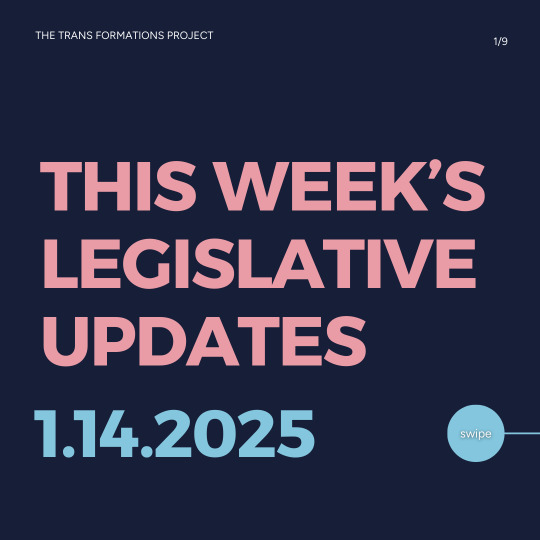


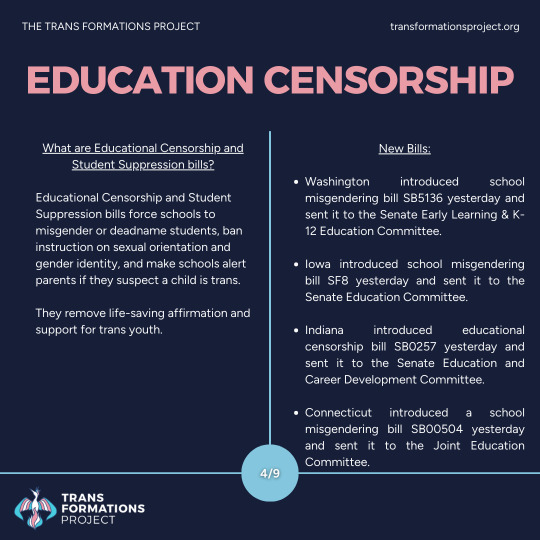
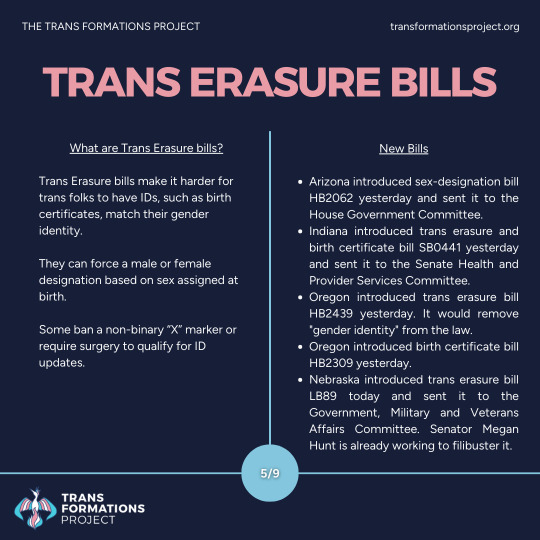




Please visit our website linked below to learn about your state and contact your reps. Here's a thread of today's updates:
Bathroom bills deny access to public restrooms by gender or trans identity.
They increase danger without making anyone any safer and have even prompted attacks on cis and trans people alike. Many national health and anti-sexual assault organizations oppose these bills.
Connecticut introduced bathroom bill HB05125 today and sent it to the Joint Education Committee.
Indiana introduced bathroom bill HB1342 yesterday and sent it to the House Courts and Criminal Code Committee.
Healthcare bills go against professional and scientific consensus that gender-affirming care saves lives. Denying access will cause harm.
Providers are faced with criminal charges, parents are threatened with child abuse charges, and intersex children are typically exempted.
Washington introduced the under-18 health care ban HB1038 yesterday and sent it to the House Health Care and Wellness Committee.
Wyoming introduced health care bill HB0164 today. It would ban off-label HRT.
Oregon introduced prison-fund healthcare bans SB506 and SB672 yesterday.
Educational Censorship and Student Suppression bills force schools to misgender or deadname students, ban instruction on sexual orientation and gender identity, and make schools alert parents if they suspect a child is trans.
They remove life-saving affirmation and support for trans youth.
Washington introduced school misgendering bill SB5136 yesterday and sent it to the Senate Early Learning & K-12 Education Committee.
Iowa introduced school misgendering bill SF8 yesterday and sent it to the Senate Education Committee.
Indiana introduced educational censorship bill SB0257 yesterday and sent it to the Senate Education and Career Development Committee.
Connecticut introduced a school misgendering bill SB00504 yesterday and sent it to the Joint Education Committee.
Trans Erasure bills create legal definitions of terms like “sex” designed to exclude or erase trans identity and insert them into various laws. This can have many different effects, depending on what laws are affected.
They can force a male or female designation based on sex assigned at birth.
Some target anti-discrimination statutes, legally empowering trans discrimination.
Arizona introduced sex-designation bill HB2062 yesterday and sent it to the House Government Committee.
Indiana introduced trans erasure and birth certificate bill SB0441 yesterday and sent it to the Senate Health and Provider Services Committee.
Oregon introduced trans erasure bill HB2439 yesterday. It would remove "gender identity" from the law.
Oregon introduced birth certificate bill HB2309 yesterday.
Nebraska introduced trans erasure bill LB89 today and sent it to the Government, Military and Veterans Affairs Committee. Senator Megan Hunt is already working to filibuster it.
Digital Censorship Bills describe any legislation that potentially targets Queer and Trans media/material for removal.
They typically do this by using vague and broad definitions of "Obscene" or "Harmful to Minors" and then banning such content from being accessible to minors, which often either removes the material entirely or requires age verification methods in order to view.
This includes online censorship bills, library book bans, and other such legislation.
Oregon introduced device-filter censorship bill HB2308 yesterday.
Most sports bills force schools to designate teams by their sex assigned at birth.
They are often one-sided and ban trans girls from playing on teams consistent with their gender identity.
Some egregious bills even force invasive genital examinations on student athletes.
Georgia introduced sports bill SB1 yesterday.
Oregon introduced sports bills HB2037, SB618, and SB787 yesterday.
In other bills that either fit multiple categories or stand on their own, we have:
Washington introduced HB1027 yesterday and sent it to the House Community Safety Committee. It would ban the housing of any trans person with those not of their "biological sex" if said trans person has been convicted of a sex offense against those of the same gender identity.
Indiana introduced anti-DEI bill SB0235 yesterday and sent it to the Senate Judiciary Committee.
North Dakota introduced HB1430 yesterday and sent it to the House Human Services Committee. It would allow discrimination against queer and trans people by social workers.
Wyoming introduced anti-DEI bill SF0103 yesterday.
It's not too late to stop these and other hateful anti-trans bills from passing into law. YOU can go to http://transformationsproject.org/ to learn more and contact your representatives!
#transgender#trans formations project#trans#lgbtq#lgbt#anti trans legislation#activism#trans rights#protect trans kids
44 notes
·
View notes
Text
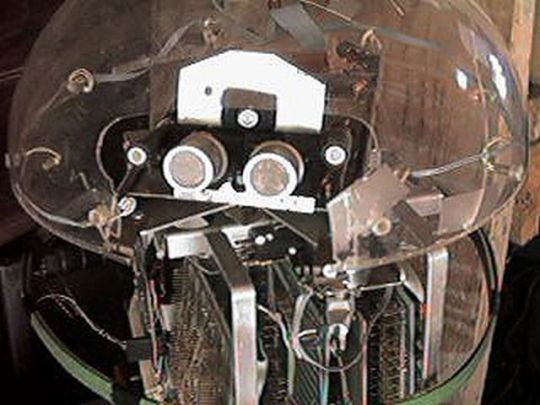


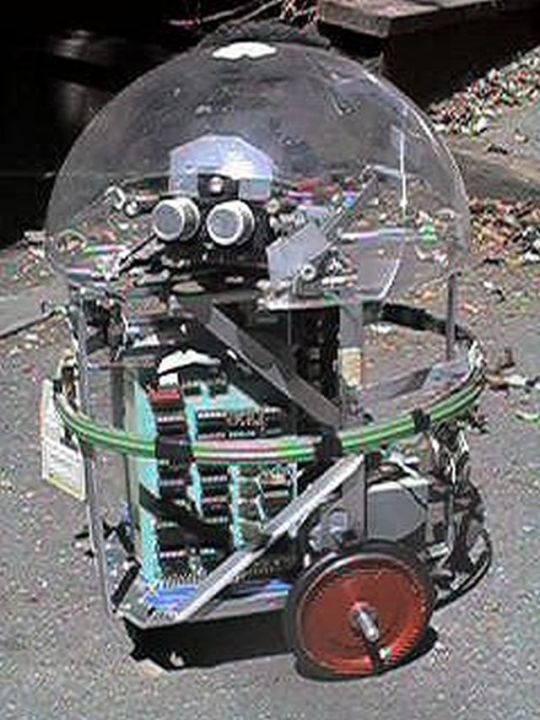

Kermit (1978), by Ron Milner and Larry Nicolson, Cyan Engineering, Atari's secret think tank in Grass Valley, CA.
"The robot was a pet project for Nolan Bushnell, then still the head of Atari and a very creative guy. Its purpose in life was as Nolan put it to "bring me a beer!" Navigation for robots was a sketchy thing at that time with lots of pioneering work at MIT but no consumer cost ideas. Nolan brought us the incredibly original idea to navigate a robot (which mostly meant knowing where it was) by means of scanning bar codes attached here and there to the baseboards in the rooms the robot was to service. Why it wasn't patented I don't know.
I had lots of fun building the R2D2 style robot about 20" tall. I liked to put mechanical and electronic things together and we had a great shop at Cyan. Its brain was one of the 6502 based single board computers-I think it was a KIM but not sure. Locomotion was two DC gear motor driven wheels and an instrumented caster-about the same rig as a modern Roomba. A rotatable turret covered with a plexiglass dome carried microphones, an IR sensor to detect people, and ultrasonic ranging sensors I built on a separate PC board. A speaker so Kermit could beep gleefully, of course.
A ring of contact-detecting burglar alarm sensing tape (green in the pictures) around Kermit's middle told the software he had hit something and should back off. The ultrasonics provided range to obstacles and to some extent direction as the turret was rotated, so we could go around things.
My pride and joy was the barcode remote scanner which was mounted on the bottom of the robot so its rotating head would be level with the barcodes on the baseboards. It had a vertical telescope tube with a beam splitter between the IR Led and the photodiode sensor and a lens to focus 2-20' away. It aimed down at a front surface mirror at 45 degree to scan horizontally. The mirror was mounted on a motor driven turret so it spun around continuously with a sensor once around to resolve the continuous angular position of the beam horizontally of course with respect to Kermit's rotational position. Unfortunately, this part of the robot did not survive the closing of our group. The barcodes I made for the prototype to detect were about 4" tall made of 3/4" reflective 3m tape on black poster board.
My programming partner on the project was Larry Nicholson, a really bright guy. He made the barcode reading work to detect not only the barcodes, but where they were angularly with respect to the robot and also their subtended angle or apparent size (all from timing of the rotation of the scanner) which was a measure of distance combined with angle from the barcode. We worked out some pretty clever math to resolve that information from two or three of the barcodes into a position and orientation of Kermit in the room. We had rented an empty room upstairs on the third floor of the Litton building to try all this out and work out the navigation. Larry and I got the basic navigation and obstacle avoidance working so Kermit could go from one place to a designated other place in the room and avoid wastebaskets placed randomly. We demonstrated it to Nolan and he was impressed.
Shortly thereafter Warner Communication who had bought Atari from Nolan kicked him out and the Kermit project was cancelled."
– Kermit The Robot Notes by Ron Milner.
65 notes
·
View notes